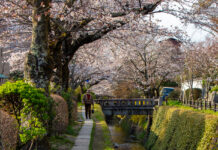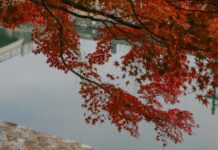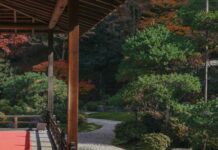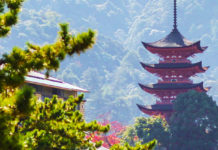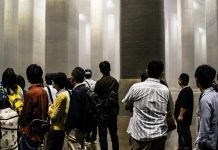Shо̄sei-en is something of a quiet wonder; an undulating garden, shimmering lakes, and classical architecture hidden in the centre of Kyoto city, a few minutes’ walk from the megahub of Kyoto Station. It’s actually an extension of the colossal Nishi and Higashi Hongan-ji temples. Viewed from above, the layout indicates a connected site plan that predates the buildings of today.
Despite its central location and ease of access, Shо̄sei-en hasn’t received the level of popular attention that other sites in Kyoto currently enjoy. However, its undulating miniature landscapes and umber-hued wooden buildings could easily compete with the likes of Nanzen-ji or the Silver Pavilion. Better than it doesn’t, though; Shо̄sei-en’s peace and relative emptiness are what makes the experience of visiting altogether different from the more popular and crowded parts of Kyoto.
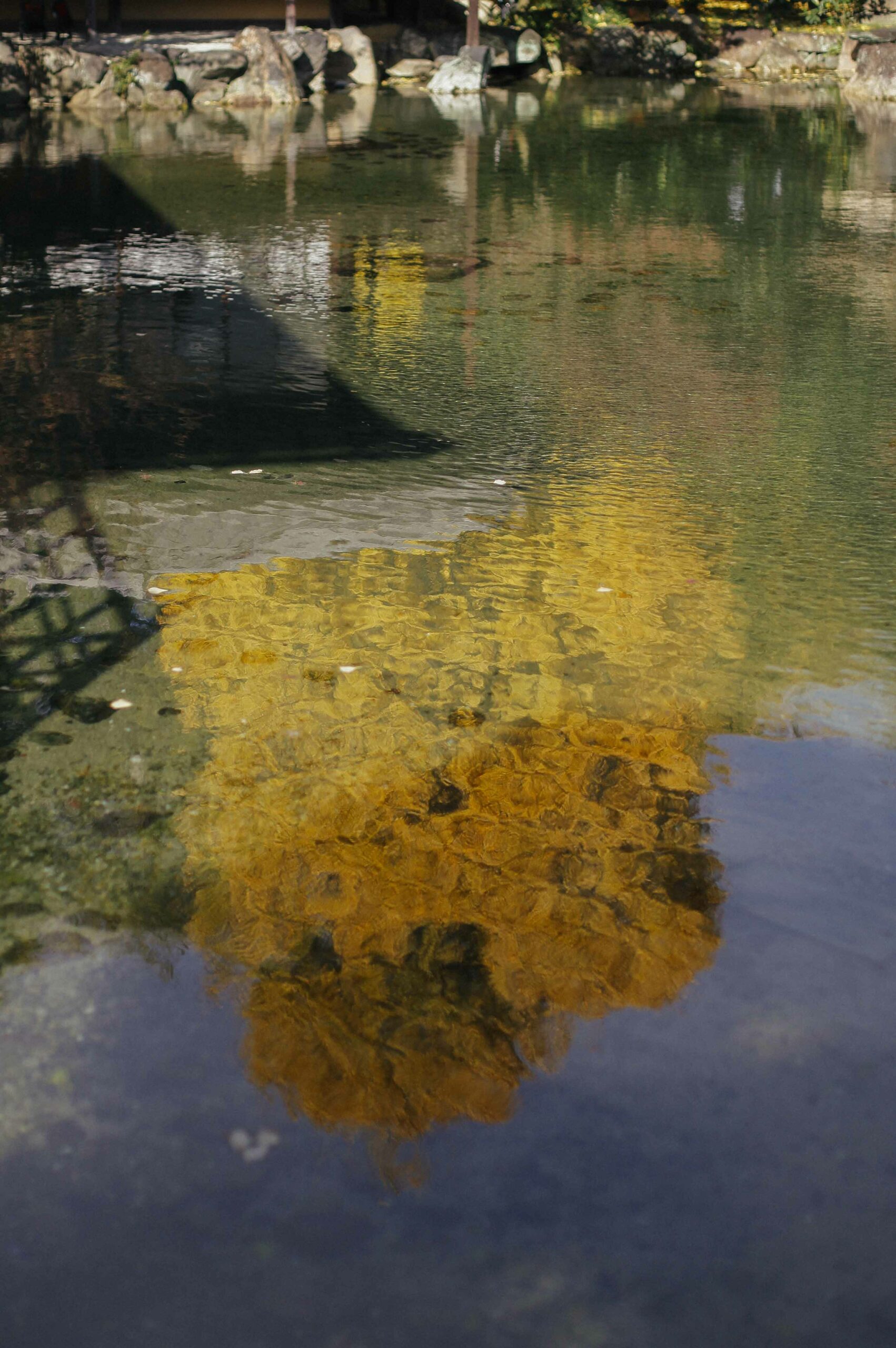

Sharing a centrally aligned avenue with the gigantic Nishi and Higashi Honganji temples, Shо̄sei-en offers an ideal and tranquil end to a walking tour of all three locations. You could even stop for fluffy pancakes and delicious coffee halfway through your stroll, as a branch of Kо:hi:Kan sits at an intersection that overlooks the southern corner of Higashi Hongan-ji — ideal for people-watching.
The entrance to the gardens is marked by two heavy wooden doors, blackened with age and of an imposing height. A ginkgo tree towers skyward from behind these gates. It’ll be either bare, lime-green, or yolk-yellow depending on the season. The scene naturally draws passers-by in — but wait! Avoid the faux-pas of marching through the gates without first paying the modest entrance fee of ¥500 at the ticket desk to the right of the gates. You’ll also be given a glossy brochure (in English) offering in-depth information about the gardens, their design features and history.
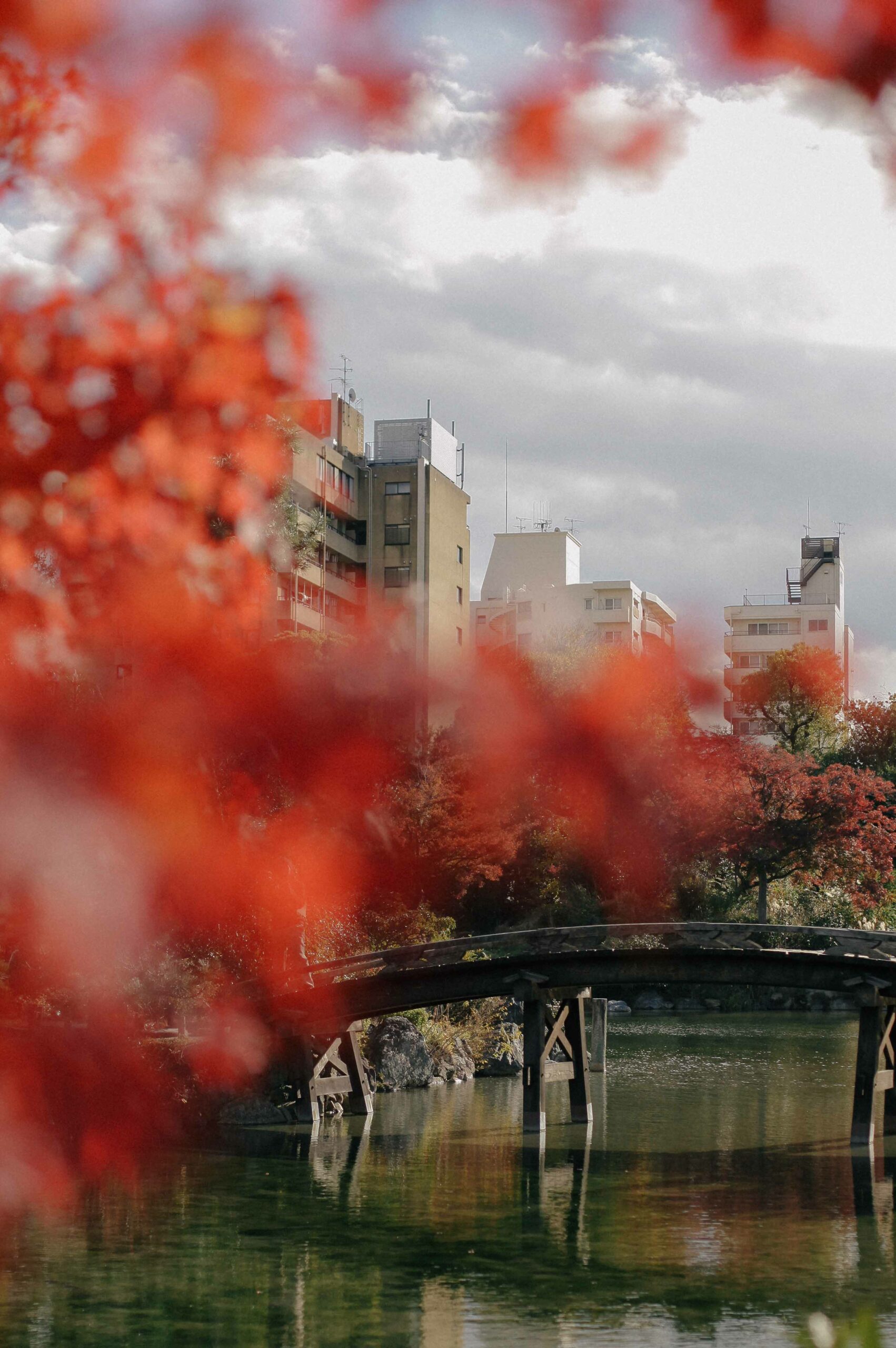
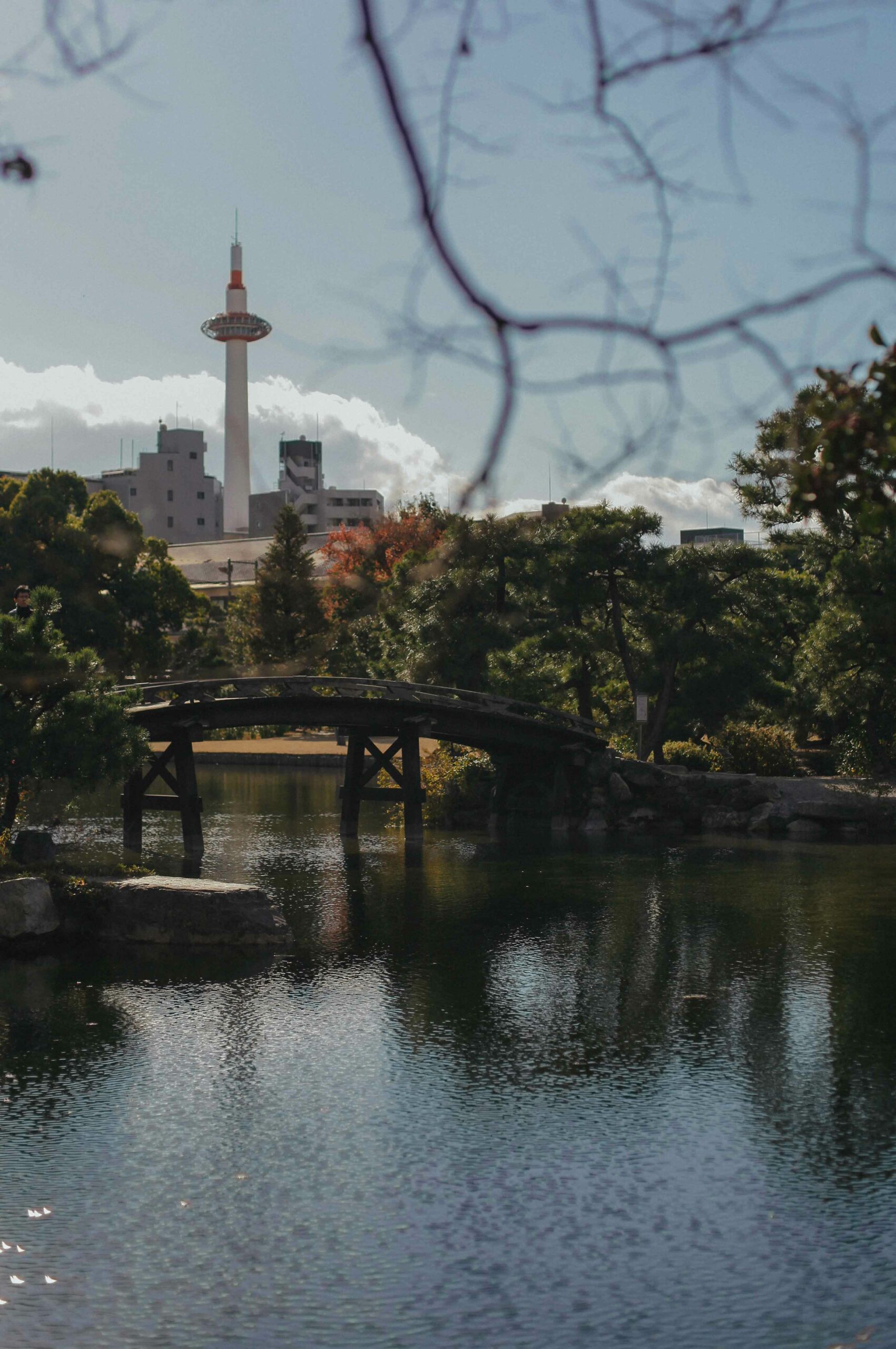
Shо̄sei-en isn’t just a ‘pretty face’; it’s a site packed with history and has a multitude of architectural time periods represented in its reception halls and teahouses. Built on land gifted in the 1600s from Shо̄gun Tokugawa Iemitsu to the Hongan-ji, the garden was built around a residence situated at the centre of the site. In later years, tea houses were built in the styles of their time, serving as locations for both monastic and noble pursuits of the Urasenke school of tea ceremony. Most notably, the grounds were laid out by Ishikawa Jozan, founder and first resident of Kyoto’s Shisen-dо̄ temple.
Historically, the layout of the gardens would have incorporated the distant vista of the Higashiyama mountains, rising in the east of Kyoto. With no tall buildings to interrupt the view, the mountains would have created a ‘borrowed landscape’ design feature; a highly prized aspect of Japanese garden design. Today, however, Kyoto Tower and multi-storey residences overlook the rippling surface of the central lake. This blend of the historical and modern is characteristic of so much of Japan; but Shо̄sei-en feels all the more a space of sanctuary from within the tall borders of modern buildings.
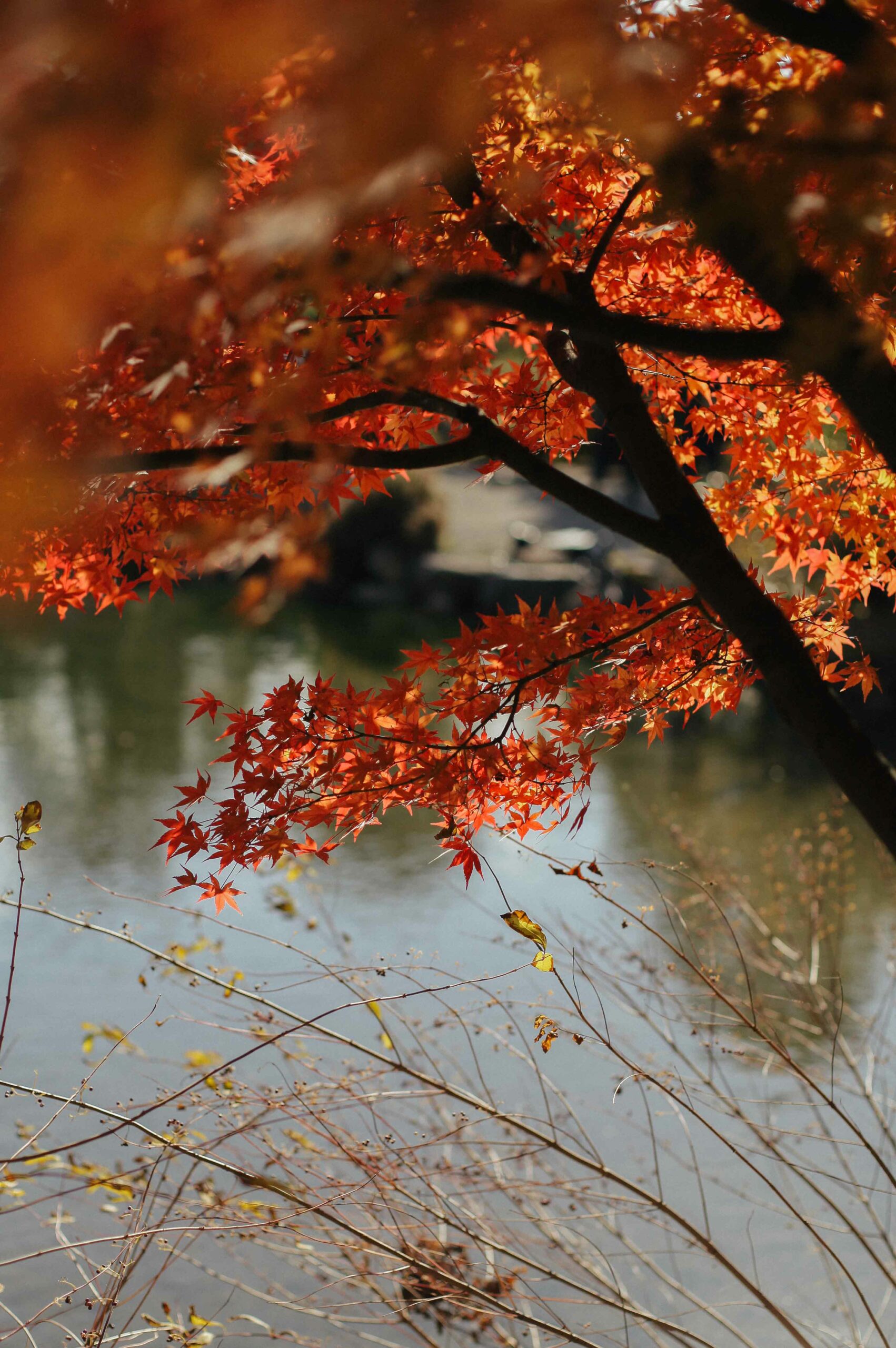
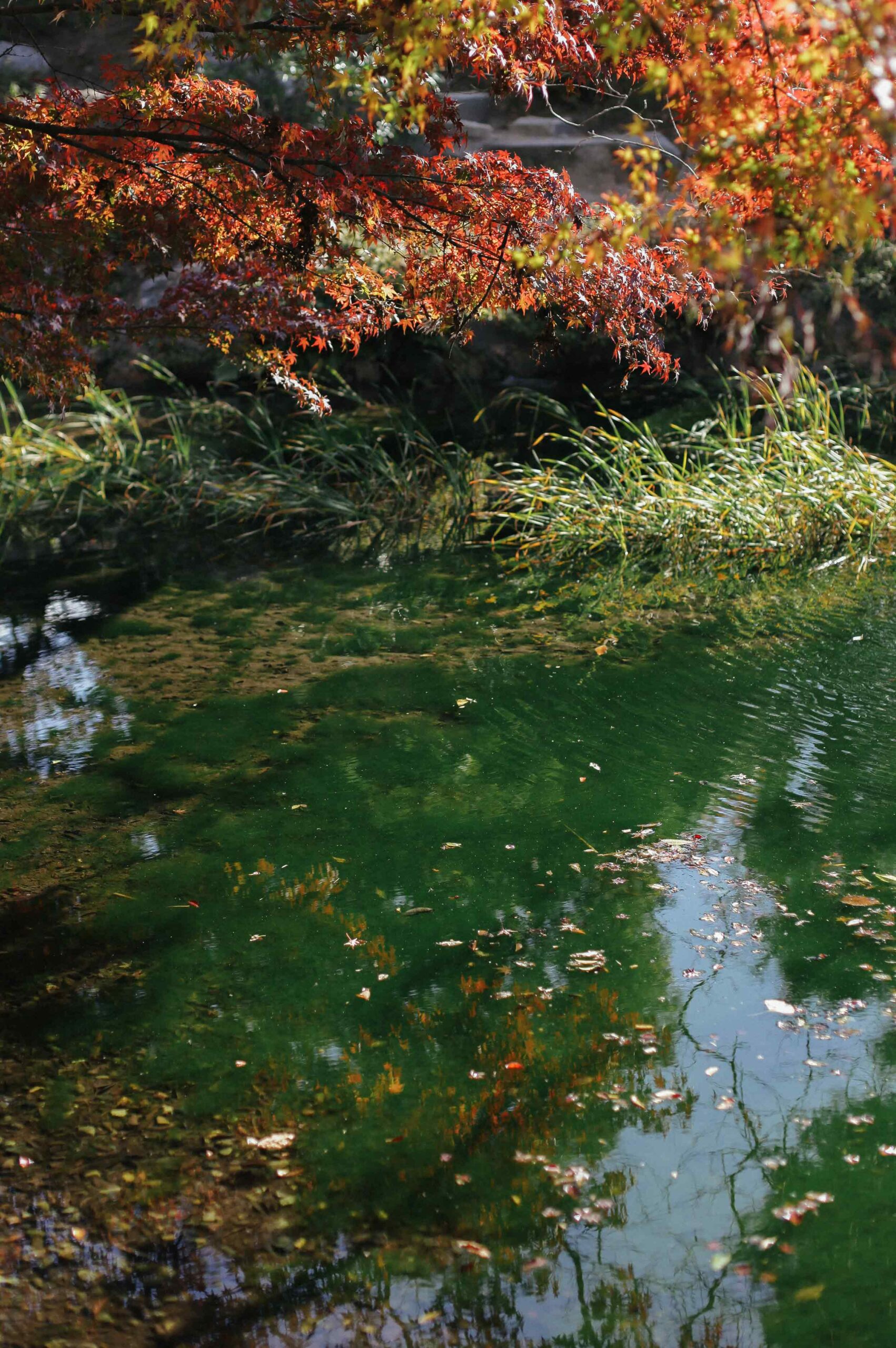
Sadly, none of the garden’s multiple teahouses and reception halls are open to the public, but all can be viewed at leisure from the outside. Although various buildings have stood on the site since the 1600s, most were burned in accidental fires and rebuilt at least once in their history. Some of these rebuilding took place in the late 1800s and others as recently as the 1950s, largely from original architectural plans. It’s here that low-level experimentation has taken place in the form of teahouse design, with two-storey houses plonked in the middle of flat lawns, or balanced on the higher peaks of artificial micro-mountains.
Progressing through the gardens, complex blends of reflection and shadow reveal themselves. The first and smaller pond on the strolling route serves as a mirror to the teahouse built at its edges. In autumn, it boldly reflects the columnar ginkgo tree on its surface, blurred occasionally by the chill seasonal winds. The larger central lake acts as both a lens and a mirror, revealing a world of bright green pond weed and sunken leaves through its glassy depths, while beaming light upward to shimmer on the undersides of vermilion maple trees.

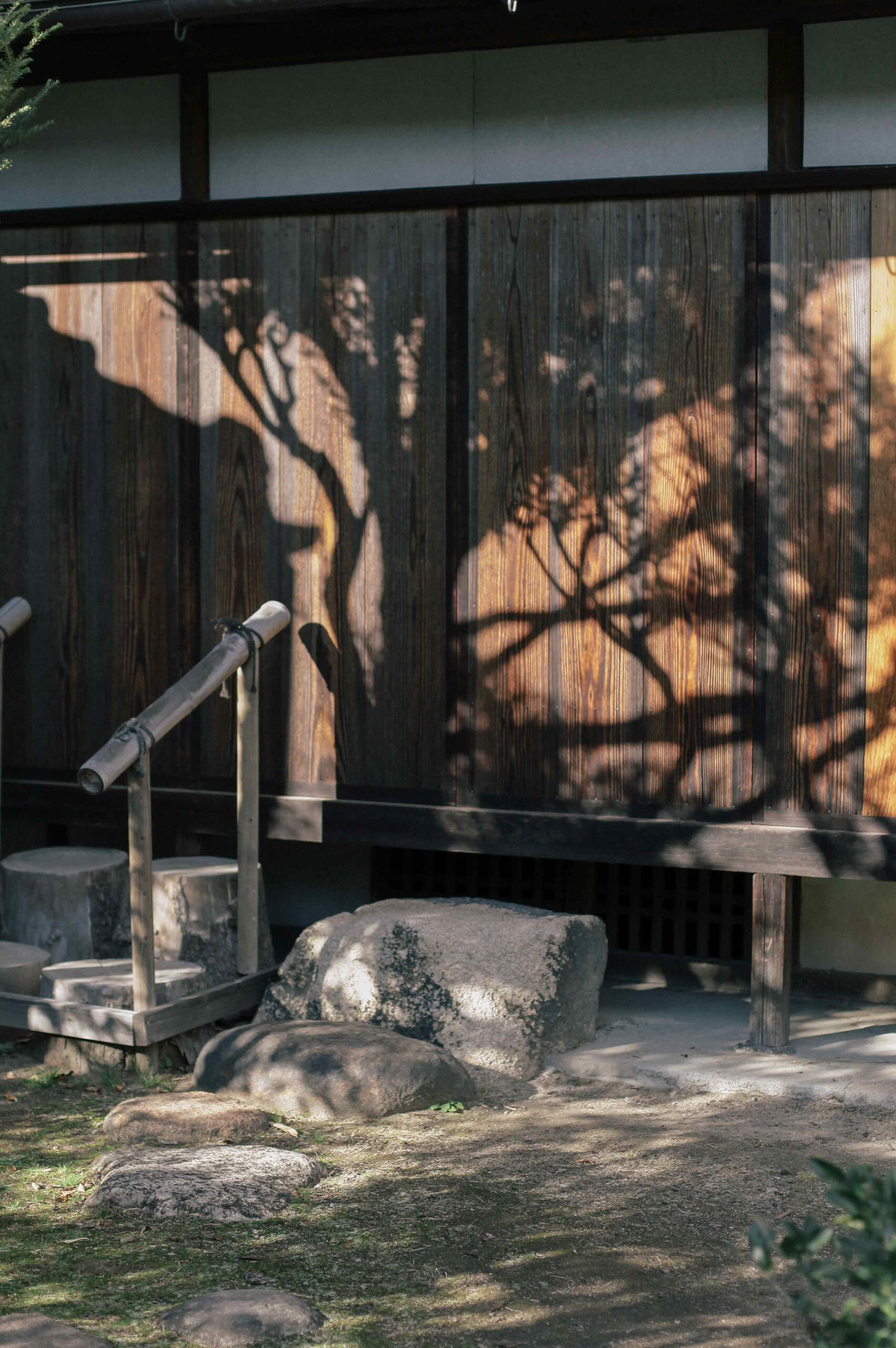
As you step across stone pathways set into crumbly moss, the garden’s angular black pine trees cast their twisting shadows onto the outer walls of the reception rooms and teahouses. Strange features abound here; stone staircases leading to nowhere and inner layers of glass somehow reflecting the outside world back into their interior spaces. Gazing through the windows under the Rofu-tei reception hall’s eaves, both the gardens before you and the shadows and buildings behind you are placed within a single frame. This blending and compression of space and vista echoes practices in Japanese landscape painting; the artful collapse of depth and distance into a perfectly-framed single dimension.
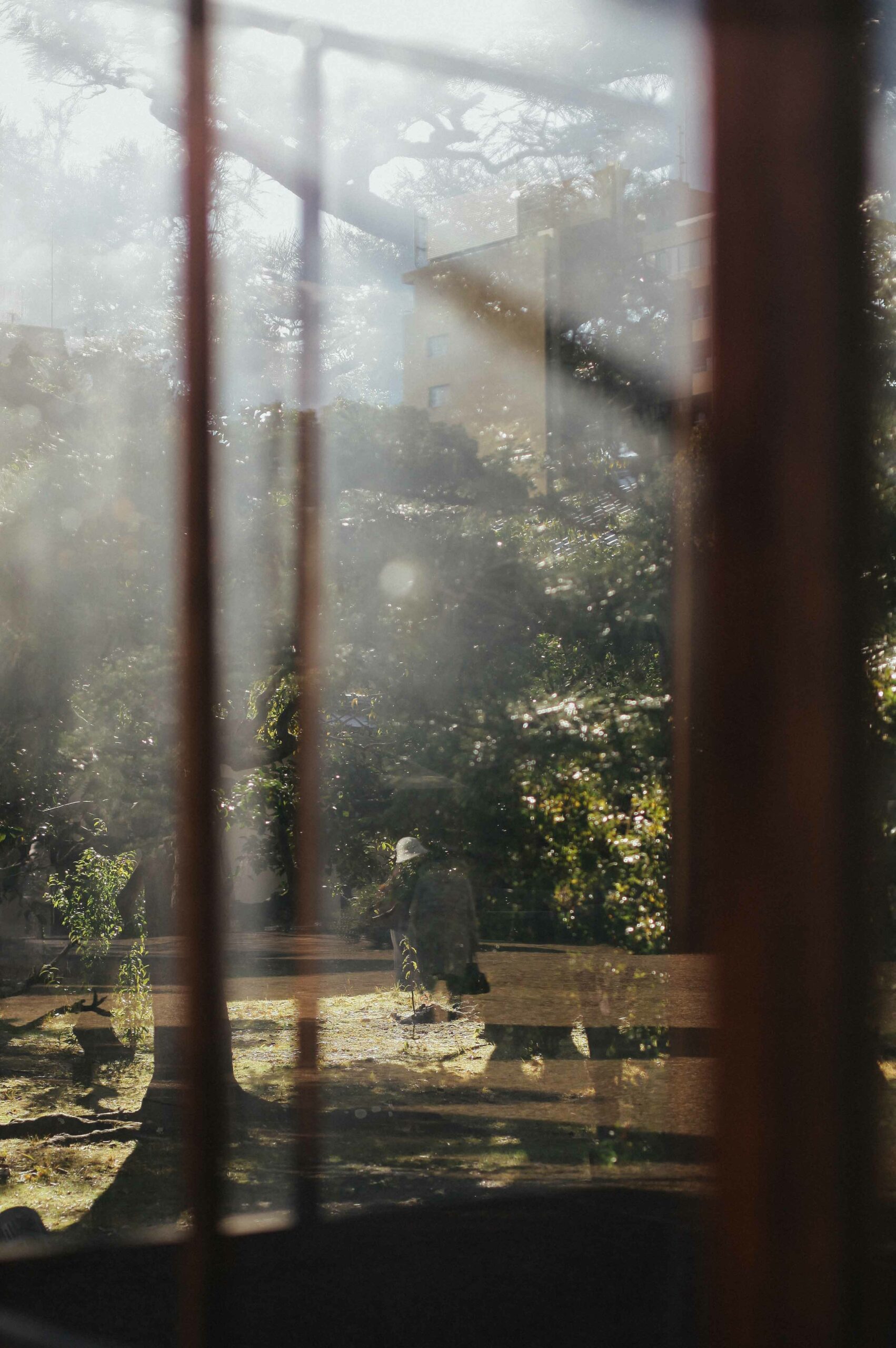
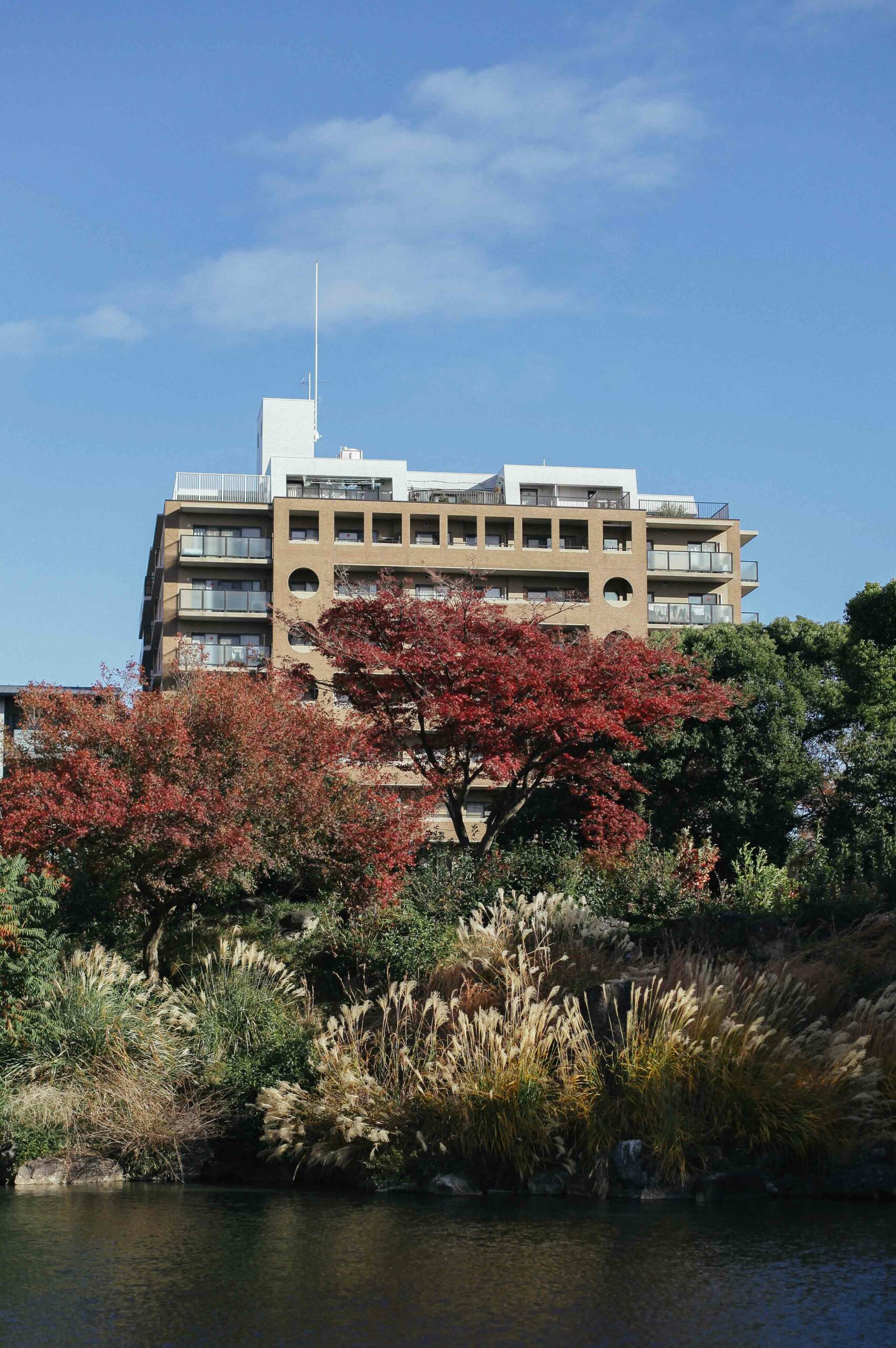
While many of Kyoto’s scenic locations offer views that are tied to a single season, Shо̄sei-en is built upon a planting scheme designed to offer year-round beauty. A plum grove of twenty trees of red, pink and white blooms frames the central lake, with the colours at their best in February and early March. Immediately succeeding the plum is a wide grove of tall cherry trees; pale pink blooms reach their peak in late March and early April. Camellias bloom pink and white from February through to April and water lilies rise from the depths of the pond and lake from May until September. In November and December, long-awaited crimson maple leaves frame a carefully designed ‘vermilion valley’, tracing the northern edges of the central lake. The light from the water’s surface casts a shimmer on their leaves, creating multi-dimensional movement. Several towering ginkgo trees intersperse the scenery with exuberant hues of yellow, bright against autumn’s cold blue skies.
Sadly, Kyoto’s winters rarely see deep layers of snow, which truly bring historical woodblock scenes to life. However, when snow does settle, Shо̄sei-en’s landscape recedes almost to black-and-white, the lack of colour adding to an atmosphere of stillness and silence.
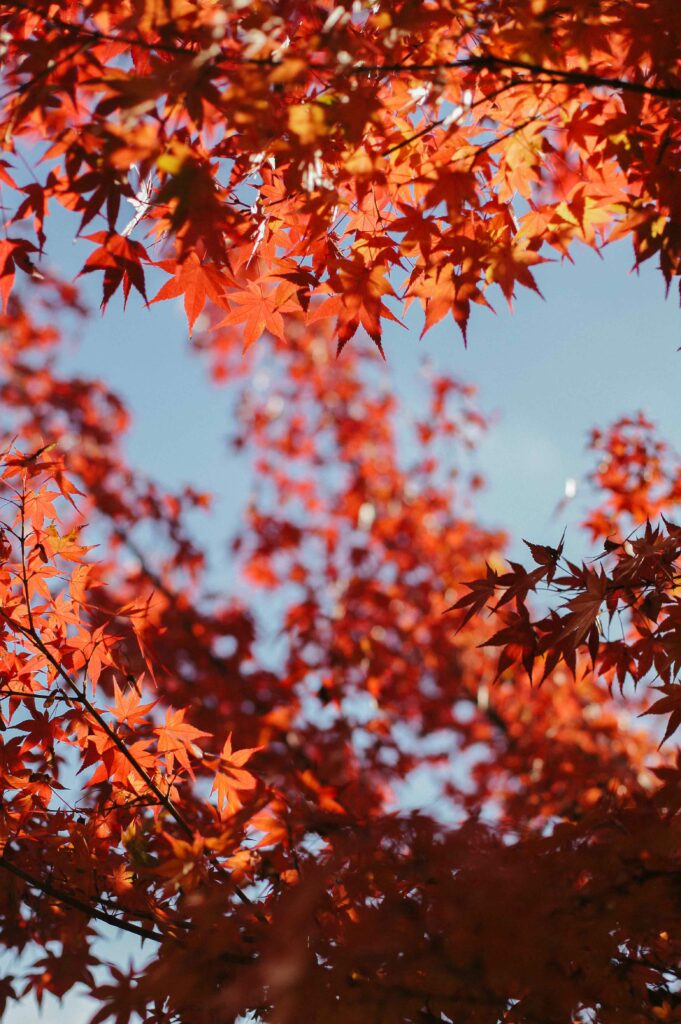
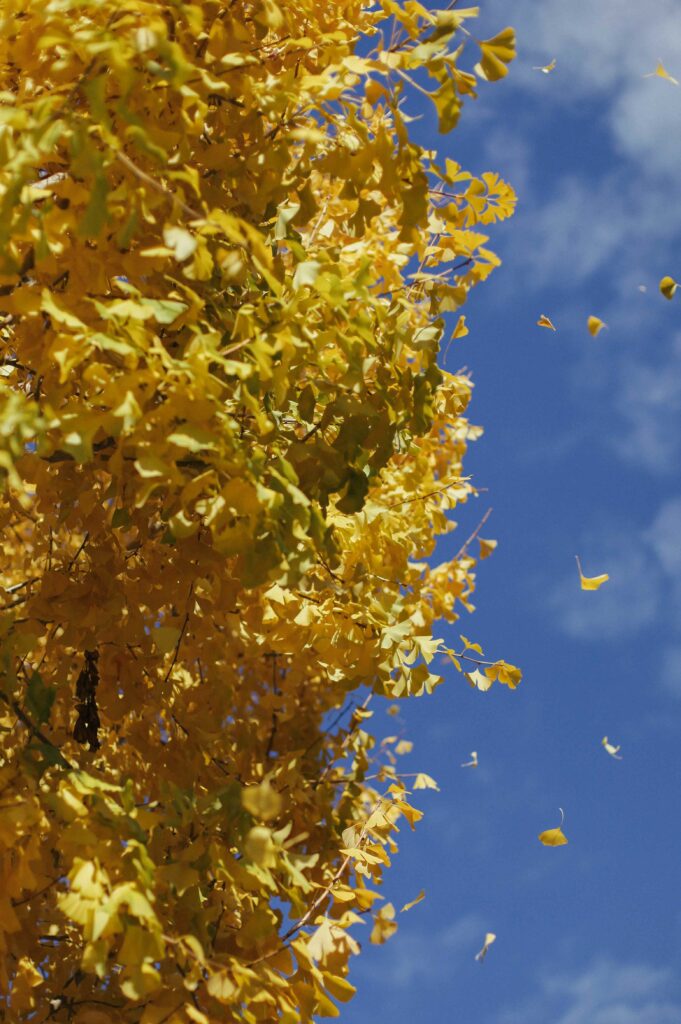
Shо̄sei-en is without doubt a wildly underrated wonder within Kyoto. Perhaps, though, this is a positive. The expansive site has vistas, twists, and turns in such abundance that its modest number of visitors can be easily absorbed into the undulations and corners of the landscape. This concealment deceives the eye, making it feel emptier than it truly is. Shо̄sei-en’s atmosphere is enhanced by its sense of peace and stillness, each view carefully framed as a self-contained world. Each corner turned brings you to a new scene, complete in its considered beauty and subtle refinement.
The interplay of shadow, light, and reflection within the garden brings both manmade and natural structures together as a single act. Black pines casting shadows on the wooden walls of reception halls are simultaneously reflected on and within layers of glass opposite. Shо̄sei-en’s winding paths and multi-dimensional built interiors combine to create a place that reaches beyond a simple footprint.
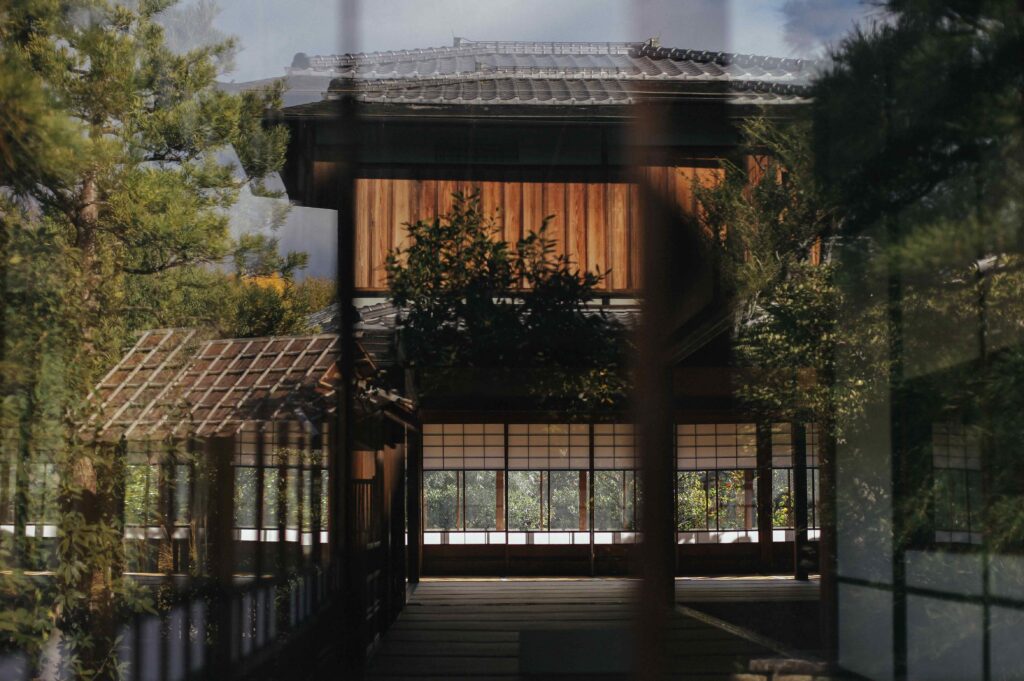
Access: Shо̄sei-en is a 10 minute walk to the north of Kyoto station, and is around five minutes’ walk east of Higashi Hongan-ji temple.
Link to PDF of Shosei-en map here: https://ueyakato.jp/pdf/gardens/09_shoseien_01.pdf
Name: Shо̄sei-en
Address: Shomen-dori Ainomachi Higashi-iru, Shimogyō-ku, Kyoto 600-8190, Japan
Open: March through October: 9:00am–5:00pm, last entry 4:30pm. November through February: 9:00am–4:00pm, last entry 3:30pm.
Admission: ¥500
Website: http://english.higashihonganji.or.jp/tour/shosei-en/
Post by Japan Journeys.




